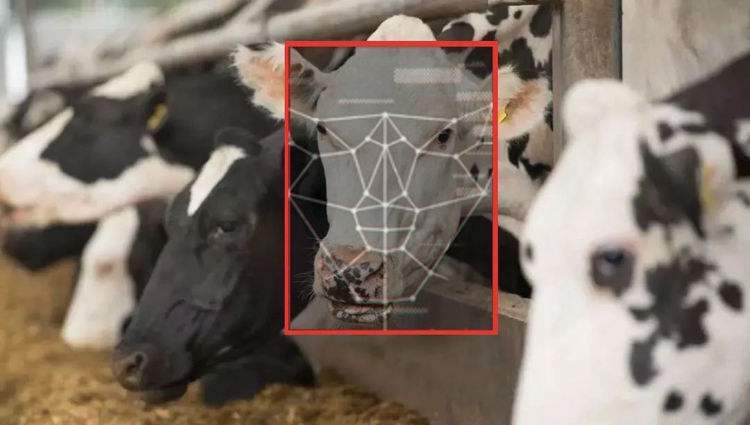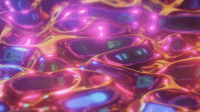Technology that can accurately identify animals could help reunite owners with lost animals, help farmers monitor livestock, and help researchers study wildlife. Historically, microchips have been the most popular method of animal identification in this regard. However, implanting the chip requires an invasive procedure. They cannot be read without specialized equipment, and thieves can extract the microchips. Another method is DNA analysis, which is precise but also very expensive and time-consuming.
Animal facial recognition (sometimes not limited to faces) powered by computer vision solutions can serve as a viable alternative to the above approach. Despite its drawbacks, the technique can show a high level of accuracy in specific situations. So, how does animal facial recognition work? Where will the challenges stand in the way of progress in this technology?
How Animal Facial Recognition Works
In general, there are three main steps to an animal facial recognition solution:
Image Capture: Take pictures of animals with a high-resolution camera. Some algorithms only work on predefined poses, so images that meet these conditions must be selected.
Feature extraction: Assess the suitability of the animal’s biometric data and pre-process if needed. The algorithm then extracts the set of features needed for recognition.
Matching: Mathematically represent the extracted features and match them with other images. For example, if we were looking for a dog in a database of lost pets, we would match the dog’s unique characteristics to all animals in the database.
Matching can be performed in several ways. One way is to use algorithms such as KNN and DBSCAN for clustering to get a set of images that are highly close to our target image, and the user can manually select the most suitable image. In addition, probabilistic methods can be employed to express the final result as a confidence level.
Find lost pets
Losing a pet is heartbreaking for the owner. And according to statistics, this is far more common than one might think. In the United States, one in three households with dogs and cats goes missing at some point in their lives, and 80 percent of them are never recovered. There are several pet facial recognition-based tools that can help owners find their lost friends.
ForPaws: This animal facial recognition solution identifies dogs based on their nose tip, skin color and coat type. Animal owners are required to upload at least three photos to create a “personal profile” of the animal. Currently, the program can identify 130 dog breeds with an accuracy rate of 90%.
PiP: This animal identification company has developed an app that allows animal owners to register and upload photos of their animals. The system analyzes their unique facial features. PiP claims it can recognize every lost cat and dog if the owner can provide more information, such as gender, size and weight.
Anyone who picks up a lost pet can also use the app to find its owner. PiP’s solution also continuously scans social media for pet posts and sends missing pet alerts to residents of the relevant community.
Love Lost: Love Lost by Petco is another app that helps pet owners and pet shelters. Owners are advised to create profiles of their pets so that when a pet goes missing, the software can start matching the animal’s biometric information with new members of the shelter and other pet candidates.
Identify specific animals
Sometimes it makes sense to train an algorithm to recognize a specific animal. For example, animal owners can benefit from a system that can accurately identify their animals and take action accordingly, such as sending an alarm or opening a door to let the animal in. Arkaitz Garro, a front-end engineer at WeTransfer, has developed an animal facial recognition solution that can identify a neighbor’s cat and send Garro an alert when a cat appears at the door.
To capture the cat’s photo, Garro used a small camera and a Raspberry Pi with motion detection software. When an animal approaches the camera, the system takes a photo and sends it to the AWS recognition platform to compare it with other photos of the cat uploaded by Garro. If there is a match, the engineer will be notified.
Microsoft has also developed Internet of Things (IOT) devices that can recognize animals and connect to pet portals. Once it recognizes that it’s your own pet, the device opens the door and lets it in.
Aid in Scientific Research – Facial Recognition of Dolphins
In addition to identifying domestic animals, facial recognition algorithms can also be used to identify other species. A study published in the Journal of Marine Mammal Science looked at a set of traits needed to identify dolphins. The researchers tracked and photographed 150 bottlenose dolphins over a 12-year period. The research team wanted to evaluate the idea of using dolphins’ face and dorsal fins for identification over their lifetime.
Of the 150 subjects, only 31 dolphins had full profile faces (that is, clear photos of the left and right sides of the face and the dorsal fin). The study relied on human expert opinion and statistical methods to detect similarities between different images of the same dolphin.
The experimental results showed that the facial features of dolphins remained consistent over time and could be used for identification purposes. The cub can even be identified as an adult, which has greatly facilitated research on dolphins.
Help farmers monitor livestock
Identifying farm animals is a challenging process. With pigs, it’s more difficult because all pigs look the same. But the cows are a bit special, they are black and white and have different shapes. However, when it comes to cows, another challenge arises – where to install the cameras. Cows are curious animals that notice even the tiniest changes in their surroundings. They often try to lick or otherwise interact with the camera.
But building a system that can identify individual cows would greatly help farmers. This solution can match the animal’s health and dietary patterns to the animal’s identity. Augmented by artificial intelligence, it will be able to detect any signs of disease and abnormal behavior and notify farmers in an emergency.
The core algorithm platform of Beijing Xiangchuang Technology has realized the data collection and facial recognition of pigs, cattle, sheep, donkeys and other livestock, and has accumulated more than 10 million facial data of livestock. It not only helps farmers to carry out refined breeding management, but also assists financial institutions such as banks and insurance companies to establish risk assessment and early warning systems when conducting business in the breeding industry.
Challenges of Implementing Animal Facial Recognition Technology
Animal facial recognition technology is far behind the current fairly advanced facial recognition technology. Researchers began experimenting with animal facial recognition about four years ago, but the accuracy of common techniques is still fairly low. On the other hand, solutions with a specific purpose, such as identifying a specific animal, can be accurate.
Companies wanting to implement animal facial recognition solutions need to consider three main challenges:
Determine the optimal feature set
Scientists have specified a feature vector that can be used for unique face recognition. However, the same approach doesn’t work for animals because we don’t know which functions we need to use and how to interpret them. For example, when dealing with people, scientists can use a variational autoencoder (VAE) architecture to extract features from human faces. In this method, a photo of a person is compressed into vectors containing desired features, such as skin color and facial expression.
When it comes to animal facial recognition, there are no reliable feature vectors yet. Solving the challenge of a reliable eigenvector will greatly advance research in this field.
An open source example in this regard is DogFaceNet, a deep learning based implementation of dog recognition. It uses the dog’s eyes and nose as a feature set. This solution works reasonably well if the overall goal is to differentiate between dog breeds, but when it comes to distinguishing individual animals, it performs quite poorly.
depending on an animal’s posture
Another example is the use of the Local Binary Pattern Histogram (LBPH) algorithm, which converts images into pixels and operates by comparing the pixel values of different images. This method depends on the pose of the animal, which makes it sensitive to pose changes.
For humans, it’s easy to assume a certain pose and sit still. However, things get more complicated when we try to keep a cat or dog still in a certain position.
Provides a comprehensive training dataset
For training to be effective, the data must be diverse and cover all tasks the algorithm is expected to perform. For example, if the algorithm is supposed to identify different dog breeds, the dataset should adequately cover all breeds captured from different angles and labelled appropriately. There are a few things that could go wrong here. For example, someone might submit a picture of a mixed breed, and someone might mislabel their picture and specify the wrong breed name. To avoid such problems, experts must review all photos in the dataset one by one to verify the legitimacy of the images and the accuracy of the labels.
Progress in the field of animal facial recognition has been hampered because researchers are still unable to pinpoint the optimal combination of features that can be used to accurately identify animals at scale. Still, there are some successful applications that operate on limited data, such as identifying a specific animal or a small group of domestic or wild animals.
If you are building your own animal facial recognition system, keep in mind that animals are uncooperative biometric users. Some will insist on licking the camera, some will refuse to stand up to take a picture.




GIPHY App Key not set. Please check settings